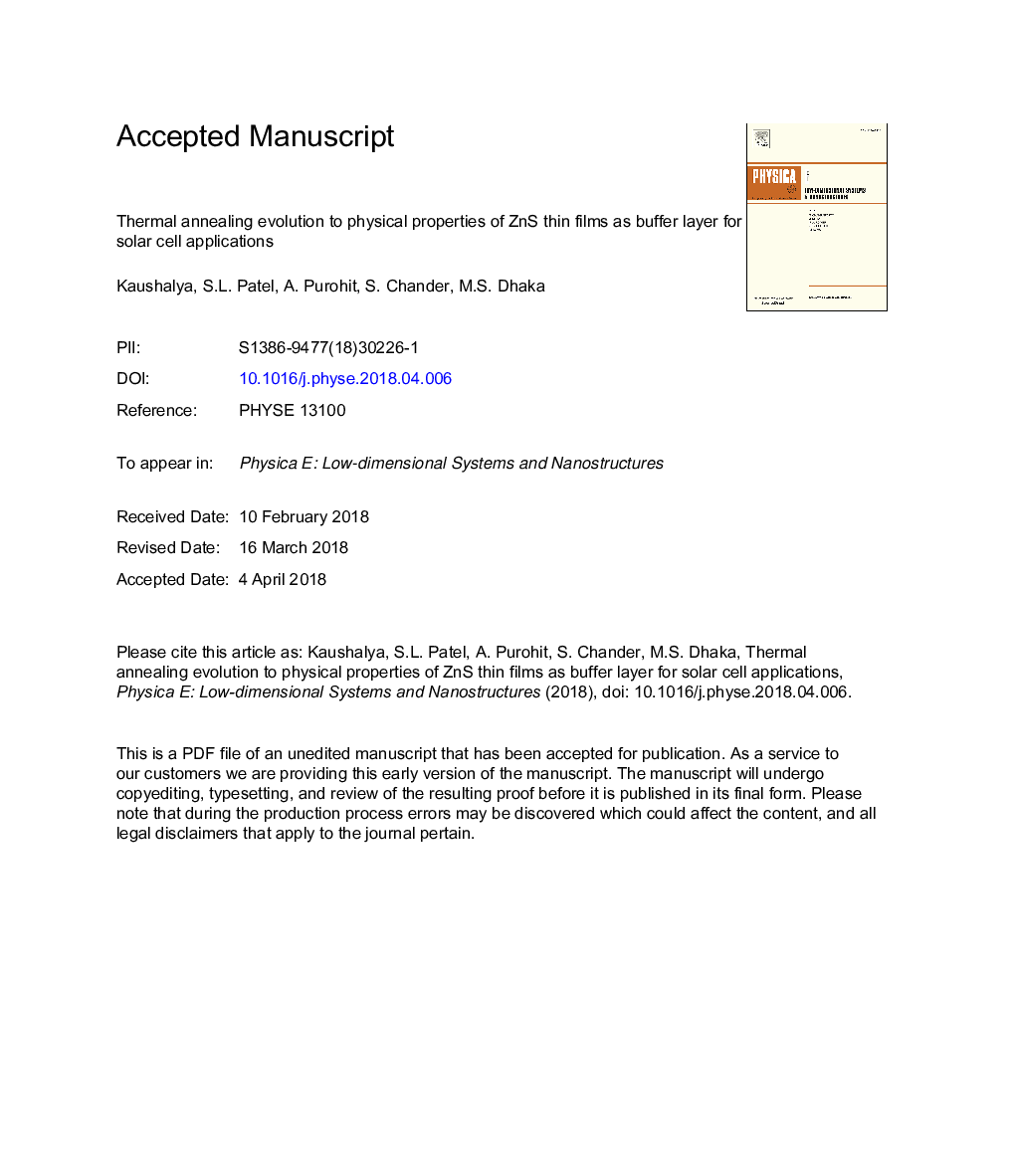| Article ID | Journal | Published Year | Pages | File Type |
|---|---|---|---|---|
| 7933264 | Physica E: Low-dimensional Systems and Nanostructures | 2018 | 10 Pages |
Abstract
The conventional CdS window layer in solar cells is found to be hazardous for the environment due to toxic nature of the cadmium. Therefore, in order to seek an alternative, a study on effect of post-annealing treatment on physical properties of e-beam evaporated ZnS thin films has been carried out where films of thickness 150â¯nm were deposited on glass and indium tin oxide (ITO) substrates. The post annealing treatment was performed in air atmosphere within the temperature range from 100â¯Â°C to 500â¯Â°C. X-ray diffraction analysis reveals that the films on glass substrate are found to be amorphous at low temperature annealing (â¤300â¯Â°C) while have α-ZnS hexagonal phase (wurtzite structure) at higher annealing. The patterns also show that the possibility of oxidation is increased significantly at temperature 500â¯Â°C which leads to decrease in direct band gap from 3.28â¯eV to 3.18â¯eV except films annealed at 300â¯Â°C (i.e. 3.39â¯eV). The maximum transmittance is found about 95% as a result of Doppler blue shift while electrical analysis indicated almost ohmic behavior between current and voltage and surface roughness is increased with post-annealing treatment.
Keywords
Related Topics
Physical Sciences and Engineering
Materials Science
Electronic, Optical and Magnetic Materials
Authors
Kaushalya Kaushalya, S.L. Patel, A. Purohit, S. Chander, M.S. Dhaka,
